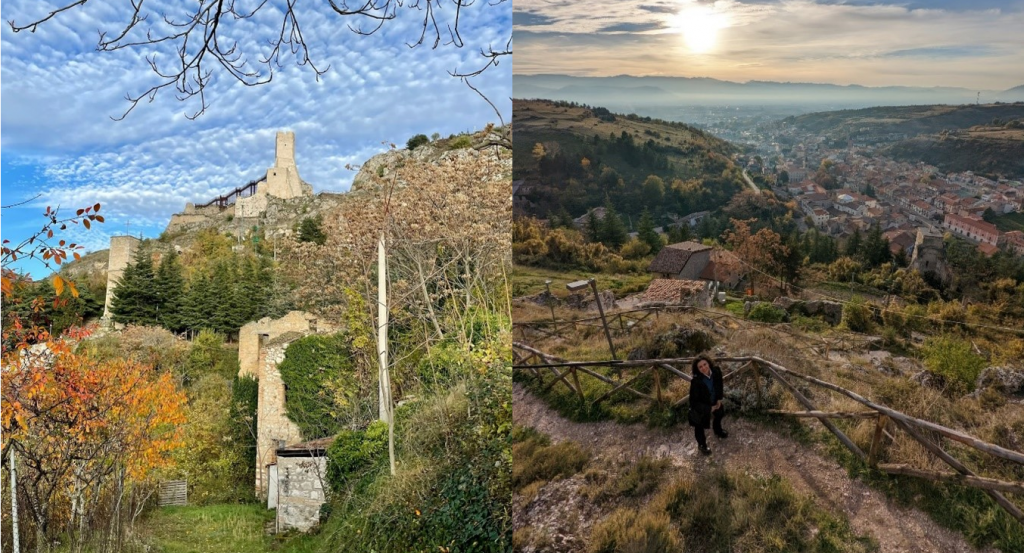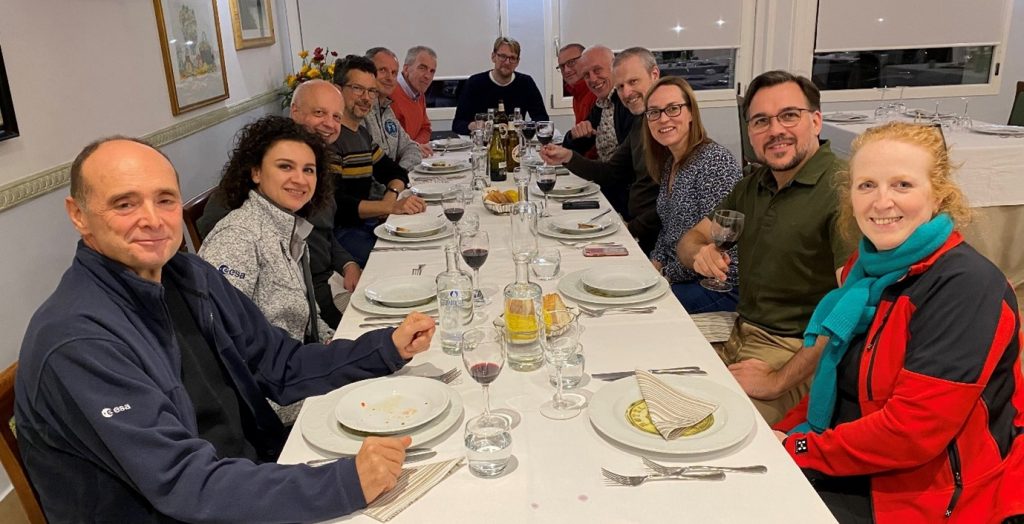Imagine this: a room full of experts, intently looking at screens showing satellite telemetry, metaphorically squeezing their collective brain trying to find a way to unblock a very stuck solar array wing that won’t turn to follow the sun. The very life of the MTG-I1 is at stake ̶ the satellite many of them have been working on for over a decade ̶ even before the satellite reaches its final orbit.
It has been a tough day, in which two full teams of engineers have been supporting operations for some complex phases of the Launch and Early Orbit Phase (LEOP) and encountering numerous problems that tested their knowledge and resilience: a defective communication bus that resulted in corrupted data from the Attitude and Orbit Control System (AOCS); a failure in the Spacecraft Control Operation System (SCOS) that rendered all operators and expert team blind for a short time, while the backup system went online.

This is what concentrated experts look like. (Credits: ESA)
And now, one of the satellite solar panels won’t turn towards the sun, risking battery depletion over a certain, limited period.
But our satellite is a very clever beast and has already noticed that something is wrong, so it has gone into Sun Acquisition Mode and faces the sun to make the best out of the energy we get from our closest star.
In the meantime, everybody in the team is working hard, proposing ways forward: use redundant systems, manually commanding a target angle in the opposite direction of rotation, and there’s even crazy talk about using all motors simultaneously, if nothing else work. A last resort effort.
In the end, our efforts are for nothing, and we realise that the wing is stuck for good, and the mission will be lost. This was our Kobayashi Maru, our unsolvable problem that, beyond the satellite and the control systems, tested each and every one of us.

It’s quite busy at Telepazio during our simulations. (Credits: ESA)
Now, imagine if this was for real and not just a simulation. Because, fear not, it was a simulation and our satellite is still doing well: safe in a cleanroom at the Space Centre in Kourou, just over a month before launch.
But it’s not ‘just’ a simulation: these are training days for the operators and the Project Support Team (PST), which comprises experts from ESA and industry (Thales Alenia Space in France and OHB in Germany), in which we learn to work together as a cohesive team, to overcome any difficulties that might arise during the early days of our satellite in space.
The day started at Telespazio Fucino Space Centre, with Telespazio Flight Operations Director (FOD) Ernesto Cerone briefing the team with the activities of the day.

Julia Hunter-Anderson, Customer Representative from Eumetsat, and Ernesto Cerone during simulation (Credits: ESA)
Our dear colleagues in PST team B started supporting the operations in the morning, and by midday, in the middle of the communications bus anomaly, they performed a quick and efficient hand-over to us, team A, with a smile that said, “This is now your problem. Good luck! We’re off for lunch”. We will do this to them tomorrow, when we swap shifts, with an even bigger smile. A bit of healthy competition is a good motivator.
But there’s an end to everything, and after a long shift of what sometimes feels like playing a high stakes video game with some friends (and in a way it’s like a video game, until it is not and we are operating the real thing, our baby MTG-I1), it’s time to gather the complete team, return to our hotel and have some dinner before a much deserved rest.
And that is indeed the final challenge of the day, the final stage to defeat: surviving dinner at the hotel restaurant.
Just a bit of context: there’s not much we can do in Fucino after a long day of work. Sure, the place is pretty as a button, and if we had the time and the energy, we would spend it exploring the quaint villages, hiking the mountains, educating ourselves in the ancient Roman and medieval history, that covers the gorgeous valley like a rich blanket.

(Credits: ESA)
But instead we sit at the table and watch in horror how Federico, our friendly waiter, brings unrequested dish after dish of local delicacies, way beyond the resistance of any person who ever lived, way beyond the much tried elasticity of our belts. Ah, the torture!

(Credits: ESA)
Our intrepid fearless Project Support Team Leader (PSTL) Angela Birtwhistle (above), draws a line in the sand “a salad is what I ordered. A salad is what I want”, moments before eating her weight in ‘antipasti’ (starters). Angela’s displeased facial expression is rare to spot in the wild and is normally reserved for cheeky waiters pushing food onto her plate, or pesky satellite operators that insist on using HRDM telemetry acquisitions during routine operations.
Alfonso Camacho, our communications expert, managed to communicate that he wanted a salad, under the false impression that it would have a manageable size. After an hour of hard work, Alfonso proudly announced that he had found evidence that the salad bowl had a solid bottom.

(Credits: ESA)
Evening after evening, we see our numbers decrease at dinner time, as our colleagues start coming up with excuses for skipping dinner, “Last night I ate enough for the rest of the month”, “From now, I only eat before 16:00”, “I want to live at least until I’m 55”.

A sample of the crazy good food we get when we call our waiter and utter the magic words “I’ll just have a starter”. (Credits: ESA)
There is only stress here at Fucino. Stress operating and solving problems with our satellite during the day, stress fending off the mad waiter, that tries to increase our levels of cholesterol beyond human levels during the evening.
But this stress is the type of training that satellite operators and support team require to be able and cope with the high levels of pressure their jobs require from them, and to do their job perfectly. Also, there are lots of yummy cookies readily available in the PST room. Life is tough here in Fucino.

Team spirit remains high! Always a privilege to work with such an amazing bunch of people. (Credits: ESA)
And now please forgive me, for the night is over and I need to go and have breakfast before my shift starts again. I’ll probably have a few of those sweet cakes with jam and ricotta that our lovely, crazy waiter has been telling us about, and some carrot cake, which is like a salad after all.

Federico, helpful as usual in the morning making what I am told is called a ‘cappuccino’. (Credits: ESA)
This picture shows either the satellite dishes that track our satellites, or the dishes used in the hotel restaurant to serve food. At this point I really can’t tell.

(Credits: ESA)
Post from: Alex Palacios, ESA MTG Principal Avionics & Data Handling Engineer, and Angela Birtwhistle, ESA MTG Project Support Team Leader
Read more about the Meteosat Third Generation mission.

Discussion: no comments